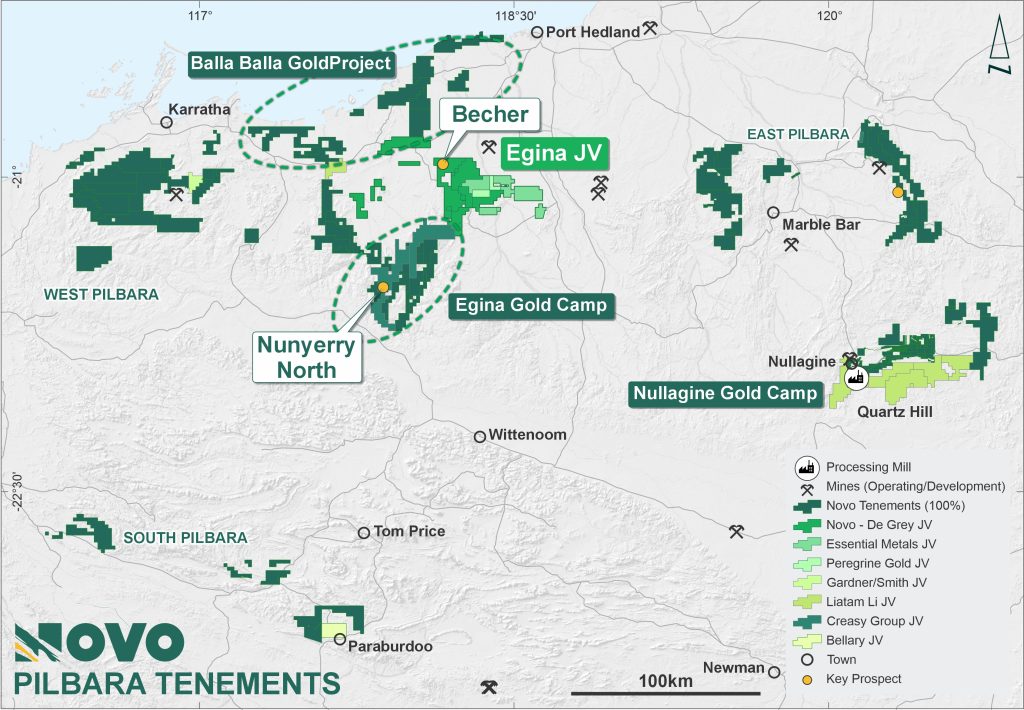The Egina Gold Camp is Novo’s highly prospective gold belt in the Pilbara and includes the priority Becher and Nunyerry projects.
This belt comprises of a series of structurally complex, gold fertile corridors, hosted by rocks of the Mallina Basin in the north and mafic / ultramafic sequences further south. These corridors trend towards De Grey’s over 11 Moz Au (JORC 2012) Hemi Gold Project to the north and northeast.
Novo’s tenure forms a contiguous package of approximately 80 km strike length directly along this trend and has been one of the main focus areas for Novo’s exploration and joint venture programs.

